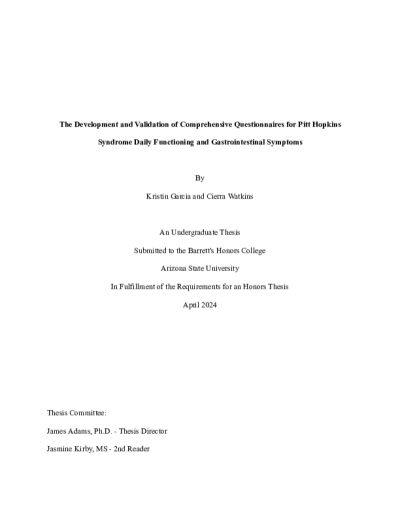The Healthy Pregnancy Summit is a collection of videos from a variety of specialists detailing how to have a healthy pregnancy and healthy child, based on the latest scientific and medical information. This project summarizes each presentation, and compares to the Healthy Child Guide, a document supplementary to the summit. Finally, this project analyzes the overall usefulness of the summit and each presentation, and suggests areas for improvement.




The purpose of this project was to develop a new questionnaire that was comprehensive and included symptoms of autism and related disorders. 28 parents of children with autism and two adults with autism were interviewed and asked to fill out the questionnaire and rate their child’s symptoms based on the available scale. From their responses, we were able to edit and improve the questionnaire to make it clearer and more concise. We added new symptoms and improved the descriptions of the symptoms listed. The new version of the questionnaire will be edited after interviewing the same 30 people again. After, it will need to be validated by a large study of around 300 people. The questionnaire will be used in an app format and help parents rate their child’s symptoms during clinical studies of medical treatments.
